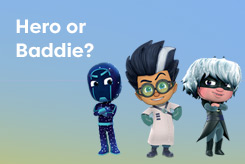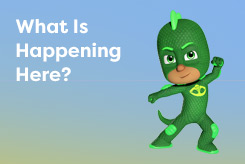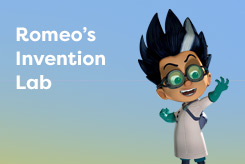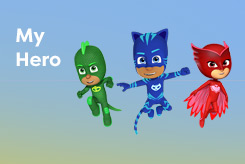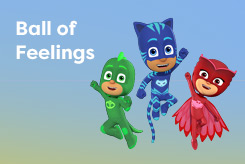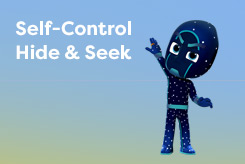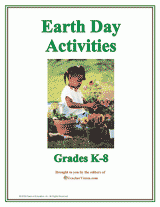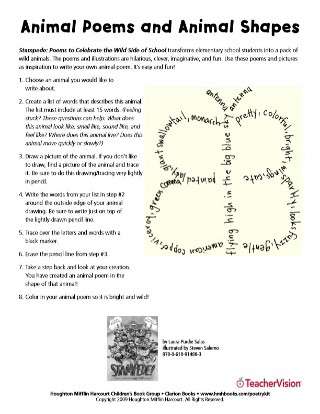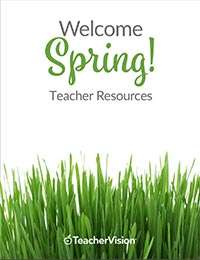
Brought to you by PJ Masks, these easy, limited-prep, center-based activities are designed to help teachers develop and reinforce important social-emotional skills in students. Some of them are designed as single-use activities, but many of them can be done repeatedly with variations and extensions to support continued skill development.
The specific SEL skills featured in each center have been adapted for early learners from the TeacherVision FutureFit framework, a project-based learning curriculum designed to support the integration of SEL and character-education skills into standard K-8 math, ELA, and science lessons. More information on FutureFit, and the individual skill domains, can be found here.
Center #1: Investigate
The activities in this center support the development of curiosity, inquiry-based learning, critical-thinking skills, and bias awareness.
Center #2: Create
The activities in this center focus on innovation, idea generation, and creative expression.
Center #3: Reflect
The activities in this center support emotional self-regulation, good judgment, and positivity.
Activity Center #1 - Investigate (Critical Thinking)

The activities in this center support the development of curiosity, inquiry-based learning, critical-thinking skills, and bias awareness to help form the underpinnings of a love for learning that drives academic success and career readiness.
Activity #1: Helpful or Not Helpful?
- Learning objective:
Evaluate several different scenarios and recommend appropriate solutions/outcomes.
- Materials/prep needed:
Scenario cards from Hero or Baddie printable.
- Directions:
As a model, demonstrate and explain a helpful action and an unhelpful action for students, and make the connection that helpful actions are common to “heroes” and unhelpful actions are common to “baddies.” Then, in a small group, read the scenarios on each card out loud to students. Ask for a show of hands from the group whether the scenario presented is something that a “hero” would do (i.e. an act of helpfulness or kindness) or something a “baddie” would do (i.e. an unhelpful or unkind act). If necessary, prompt students by asking “Is this something a HERO would do, or something a BADDIE would do?” Ask for a show of hands and call on individual students to explain why the scenario is a helpful or not helpful. Accept reasonable answers, and prompt for further inquiry using questions such as “How is this helpful? How is it unhelpful?”
- Variations/Extensions:
You can enhance this activity by using photos from magazines, social media, etc., to present new scenarios. You can also integrate the activity into classroom and behavior management techniques by applying it to individual behavioral scenarios in the classroom, i.e. asking a student exhibiting poor behavior whether the behavior is helpful or unhelpful, reinforcing good behavior by labeling it as “helpful,” etc.
Activity #2: What Is Happening Here?/What Will Happen Next?
- Learning objective:
Interpret the details present in visual information and present a hypothesis for a possible future outcome.
- Materials/prep needed:
Photographs, drawings, pictures, etc. featuring people engaged in an easily-identifiable activity. For example, a photograph of someone opening an umbrella, someone jumping into a pool, an athlete about to catch/throw a ball, etc. You can use almost any type of age-appropriate media for this, including books, magazines, photos, websites, etc.
- Directions:
In a small group, present the pictures to students, and ask “What is happening here?” Ask for a show of hands and have individual students attempt to describe what is happening in the picture. Prompt students for details on the visual information, i.e. “What is she holding?” “Where are they standing?” “How many people are there?” When the scenario and associated details have been described successfully, ask students again, through a show of hands, “What will happen next?” Accept reasonable answers and prompt for additional details. For example, if the photo shows someone about to jump into a pool, ask students to describe the details of the outcome, i.e. the sound of the splash, the wave in the pool, etc.
- Variations/Extensions:
A variation of this activity can be applied during read-aloud time by asking students to describe what is happening on the page you are reading, and then asking them to predict what happens next.
Activity #3: Everyday Recipes
- Learning objective:
Describe in detail the process of accomplishing a simple daily task.
- Materials/prep needed:
Various “everyday” items.
- Directions:
In a small group, ask students individually or as a group to come up with recipes (step-by-step processes) for performing everyday tasks, i.e. putting on a coat, packing a backpack, getting ready for bed, etc. Encourage students to think through every step of the process, and prompt students with questions to uncover forgotten or missed steps. If desired, write the “recipes” in numbered steps on a whiteboard or easel pad.
- Variations/Extensions:
This activity can be reinforced by leaving the written “recipes” around the classroom and encouraging students to follow them, step-by-step, to accomplish various classroom tasks (i.e. getting ready for dismissal, moving to centers, etc.).
Activity Center #2 - Create (Creativity)

The activities in this center focus on innovation, idea generation, and creative expression with the goal of fostering solution-based thinking and creativity.
Activity #1: Romeo's Invention Lab
- Learning objective:
Generate ideas and experiment with iteration.
- Materials/prep needed:
Paper, markers/pens, craft supplies.
- Directions:
This open-ended challenge activity is best done in small teams with teacher guidance and oversight. Give students a simple problem to solve - for example, construct a ramp that has enough height and length to enable a small ball to roll from one side of the classroom to the other. Model the activity for students by doing a quick design on paper, and then attempting to build an invention that solves the problem (i.e. make a ramp from several books). Experiment with the invention and make changes (iterate) until a suitable result is produced. Then task students with following your model to produce and iterate on an invention idea. Encourage creativity and accept all reasonable potential solutions.
- Variations/Extensions:
If desired, this activity can me modified to take on “big ideas” that are not necessarily rooted in real-life conditions (i.e. “How would we build an elevator to the moon?”) in an attempt to extend both creativity and critical thinking skills.
Activity #2: Mystery Mountain!
- Learning objective:
Design and assemble an independent creation using open-ended directions and materials.
- Materials/prep needed:
The map printable associated with this activity, markers/pens, craft supplies and materials, strips of paper, glue sticks.
- Directions:
In this activity, students will be asked to use various materials to create a “Mystery Mountain” in the middle of a map. The goal of the activity is for each student to use the materials and glue to assemble a mountain that has a distinct shape and height, and “rises” from the paper map. Give each student a copy of the map printable associated with this activity. Model the activity by using fabric, torn strips of paper, and other craft supplies to begin creating your own mountain on the map. Try to make use of as many types of material, and layers, as possible when building your mountain, and instruct students to do the same. This activity can be done individually or in small teams.
- Variations/Extensions:
When your students are finished creating their mountains, and the glue is dry on all materials, have students assemble all of their finished projects into a mountain range on a spare table, floor space, or unused desk.
Activity #3: My Hero
- Learning objective:
Select and describe individual characteristics of a personalized “hero.”
- Materials/prep needed:
Paper, markers/pens
- Directions:
Students will use paper and markers/pens to draw a picture of a personalized superhero (i.e. either themselves or someone else), with visual details corresponding to at least 3 characteristics or “superpowers.” Characteristics can include physical traits (speed, flight, strength, etc.), but encourage children to also include non-physical characteristics that are important, as well (i.e. kindness, intelligence, self-control, etc.). Model the activity for students by drawing and discussing your own personalized superhero, including a name and at least 3 characteristics. Once the creation phase is complete, have each child share out their picture and discuss the associated superpowers.
- Variations/Extensions:
As a support for classroom and behavior management, create a bulletin board to rotate through each child’s superhero on a daily basis (i.e. “Superhero of the Day”), with a focus on the characteristics that would be helpful for students to emulate during their time at school.
Activity Center #3 - Reflect (Self-regulation)

The activities in this center support emotional self-regulation, good judgment, and positivity to help kids get started on developing a growth mindset, persistence, and a positive outlook.
Activity #1: Ball of Feelings
- Learning objective:
Recognize and identify various types of feelings.
- Materials/prep needed:
Emoji faces from the accompanying printable.
- Directions:
Sit with students in a small circle facing each other. Print out the emoji faces from the printable and glue them to construction paper, and have each child hold or display a different emoji. Go around the circle and identify and describe each child’s emoji and emotion, using examples. Then, using a small ball, call out the name of an emotion and roll the ball to the student displaying the appropriate emoji. Ask the student who receives the ball to describe the emotion. Name another emotion, and have the student with the ball roll it to the student displaying the appropriate emotion. Continue until every child has had a chance to roll and receive the ball.
- Variations/Extensions:
Additional emojis can be added to the game as necessary or desired. Additional complexity can be added to the activity as desired by specifying particular patterns of emotions (i.e. “Mad, sad, confused”) and having students roll the ball in the appropriate order.
Activity #2: Self-Control Hide & Seek
- Learning objective:
Demonstrate self-control techniques while working together to solve a problem.
- Materials/prep needed:
An object that is easy to hide and easily identifiable when found in a game of hide and seek (i.e. a toy, book, article of clothing, etc.). Slips of paper or index cards that can be labeled with numbers, or numeral cut-outs.
- Directions:
From a small group, select 2 students who will be the first “team” to attempt to find a hidden item using clues from other classmates. Give each remaining student a slip of paper or an index card with a number on it. Show the object to the seeking team, and then instruct them to cover their eyes while you hide the object in the classroom. Once hidden, have the other members of the class give clues to the seeking team, in numerical order, as they try to find the object.
- Variations/Extensions:
This activity works best if you model it first by letting students hide the object from you and shout out clues/instructions (without numbers) as you attempt to find it. After you’ve recovered the object, discuss how difficult it was to follow the clues and directions with everyone shouting at once, and then commence with the activity as described above. Encourage students to wait until you call their number, and correct the behavior of students who talk out of turn with a reminder of how they can best help the seeking team by waiting their turn.
Activity #3: Find the Kind
- Learning objective:
Identify and use acts of kindness at the individual and group level.
- Materials/prep needed:
None.
- Directions:
In a small group, model the activity by defining kindness and discussing an act of kindness recently performed on your behalf or that you have observed in the classroom. Ask for a show of hands, and allow students to share an act of kindness that they have performed or received.
- Variations/Extensions:
This activity can be extended to be part of a regular classroom schedule (i.e. morning meeting, rug time, prior to dismissal, etc.), and can also be extended into providing a reward or recognition for acts of kindness performed between classmates and observed by you.






